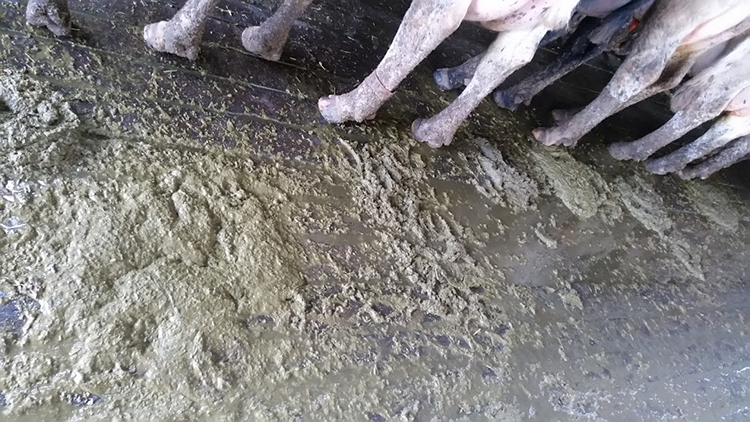
I am about to head off to my Collegiate Regional Dairy Challenge competition and thought I would brush up on my understanding of manure. It can be a great indicator of whether your ration is doing a good job and if cows are getting adequate nutrients. Dairy science students competing in the National Dairy Challenge in Georgia this March might find this helpful, too.
Besides students, dairy farmers can use manure as a tool to evaluate their cow nutrition and the health of a cow’s rumen. It can give you an idea of how the rumen is functioning and where and how well feeds are being digested.
If the rumen is working well, you should see:
• Few feed particles in the manure more than 0.5 inches long
• Little or no recognizable feed in manure (cottonseed with lint, green grass, and so on)
• About 50 percent of cows (not sleeping, eating, or drinking) should be ruminating
Rumination is maintained by fiber. If a cow does not eat enough, you will see feed pass through more quickly and be less digested.
Manure takes on different looks and consistencies based on where feed is digested in the cow.
Some nutrients can be digested in the rumen, some in the small intestine, and some in the hindgut (cecum and large intestine). The amount of time feed ferments or sits in the large intestine alters the way manure looks.
Microbes ferment feed in both the rumen and hindgut. However, the cells and protein produced by the microbes are only recycled and absorbed if fermentation happens in the rumen. Otherwise, those high-quality proteins are passed in the feces.
Some hindgut fermentation is normal, but too much can cause diarrhea, foamy manure, or mucin casts (mucous stretched through the manure).
What does manure tell us?
Diarrhea — this is a ration problem. The hindgut is most likely irritated because of higher acid production from too much feed fermenting there. Moldy or spoiled feeds may also be the culprit. If diarrhea appears sporadically across the herd, you may have some spoiled silage or feeds.
Foamy manure — too much gas production from hindgut fermentation. It appears very bubbly and comes out of cows in a solid stream.
Mucin casts — indictor of ruminal acidosis. If you drag your boot across the manure and something moves after your boot has passed, it may be a mucin cast. They appear in manure of any consistency.
Undigested feed – problems with rumen function or feeding management. This means something is up with the rumen because it is not retaining feed for digestion. Most often this occurs because of too much starch and not enough fiber. Another factor could be slug feeding, or not enough processing of grains.
How can you fix it?
Overall, 95 percent of cows in a pen eating the same ration should have similar manure. When walking pens, look for variation and evaluate five samples of manure for particle size, density, mucous, and gas bubbles.
Your best bet is reviewing your ration. A diet should be balanced for effective fiber, energy types, and so forth. Feed should be mixed for smaller particle size to lessen sorting but still provide enough fiber. Once balanced, go back through and evaluate the manure again, and reformulate if need be.
Besides feed take into consideration weather, water cleanliness and availability, ventilation, and employees. For more information and pictures, check out USDA’s PowerPoint.

Christy Achen was the 2018 Hoard's Dairyman summer editorial intern. She grew up on a dairy farm in southwest Kansas. Achen is currently a senior at Utah State University studying agricultural communications and journalism.